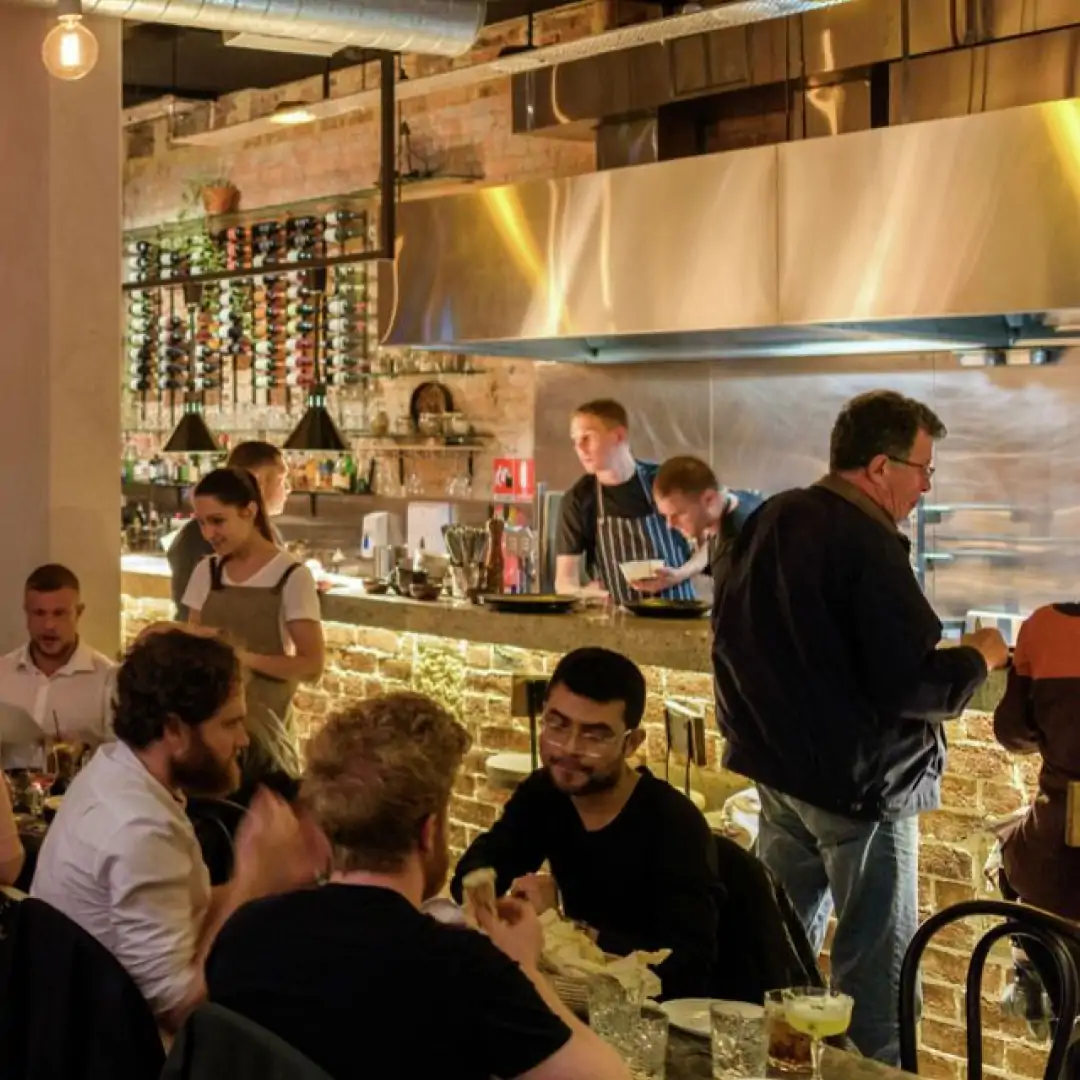Menus can be refreshed and hospitality can be fine-tuned, but your restaurant’s success ultimately boils down to discoverability. Diners are doing more research than ever and a restaurant website is a critical touchpoint of the guest experience. Creating a digital extension of your brand gives you the opportunity to start winning over guests before they reach the table.
The task may feel daunting, especially for business owners who are already stretched thin. There’s a common misconception that building a restaurant website will incur significant expense or require advanced technical skills. In reality, there are simple tools and best practices that get your website live quickly and cost-effectively.
Read the full article below to learn more about the benefits of building and maintaining a website for your restaurant, as well as helpful tips to get started.
Why is a restaurant website important?
A website can be a powerful tool for marketing your restaurant. Here are some of the key benefits of building one.
Accessibility and convenience for guests
Make it easy for potential customers to find baseline information about your restaurant, like location, menu, hours of operation, and contact details. Clearly communicating these details can improve reservation volume and foot traffic.
Restaurant discovery
Guests may search directly for your restaurant or use specific search queries to help inspire their next decision. A well-optimized website can improve your restaurant’s visibility in search engine results, making it easier for potential customers to discover you online. Additionally, a website allows you to reach a wider audience through social media sharing, linked press coverage, or online advertising.
Increased credibility and professionalism
A professionally designed website conveys authority and relevance to prospective guests. As an extension of your restaurant, it emphasizes value and contributes to a positive experience. Restaurants without complementary restaurant sites may draw skepticism or doubt.
Tell your whole story
A website gives you the opportunity to show and tell guests what makes your restaurant unique. Communicating your mission, inspiration, and unique offering—including visuals—makes people feel more invested in the experience. Don’t be afraid to use this real estate to share more of your team’s story, highlight customer testimonials or link to press coverage.
How to create a restaurant website
- Choose a domain and hosting provider
Choose a domain (e.g. www.opentable.com) that represents your restaurant (the simpler, the better) and a reliable hosting provider.
- Hire a designer or choose a website builder
Professional designers can create custom websites for your brand or you can utilize a website builder that comes with easy-to-use templates. Here are some popular choices for restaurants:
- Wix.com – customizable templates allow for easy dragging and dropping
- Squarespace – sleek, user-friendly templates
- WordPress.com – highly customizable with a vast array of templates
- Bentobox.com – specializes in restaurant industry features
- Design the layout and content
Take inventory of your assets and the core storylines you want to include on your site. Consider components like the navigation bar, home page sections, menu, press coverage, and photo galleries. Start simple and leave room to expand.
- Integrate reservation and ordering systems
Streamline your customer experience by connecting your reservation management systems and any other third-party ordering platforms you use for takeout/delivery.
OpenTable offers a customizable reservation widget you can easily add to your website. Simply copy your unique code and drop it on your site. Make sure you put it in a place where it can’t be missed to maximize guest bookings.
- Optimize for search engines (SEO)
Improve your site’s Search Engine Optimization (SEO) and increase visibility of your restaurant as diners do their research.
- Test your site before going live
Avoid any hiccups in the user experience by testing all components of your new and improved site before it goes public.
How much does a restaurant website cost?
There are a few factors that determine the holistic cost of building and maintaining your website. If you want to work with a professional designer, seek out a quote before committing. If you select a website builder like Squarespace, plans start at around $18 per month. Premium themes and templates will also incur additional one-time or monthly costs.
Consider budgeting for website maintenance costs to allow for third-party integrations that allow you to improve data collection and expand your offering.
Essential restaurant website checklist
Whether you’re starting from scratch or revamping an existing website, these are the elements you should prioritize.
- Vital restaurant information. Include hours of operation, location, map, and contact information (phone number and email).
- A standalone menu page. Show guests what dishes they can look forward to when they arrive by including a clear and concise menu. Include dietary notes and modifications when possible (e.g. gluten free options).
- An ‘About’ page. Give some biographical information on the team behind your restaurant as well as any meaningful tidbits that help tell your story.
- A seamless reservation process. Booking a table should always be one click away. Integrate links or widgets to keep guests in the funnel.
- A method to collect guest email addresses. Invite guests to join your mailing list or subscribe to your newsletter. Use this email marketing list to communicate updates or special occasions in the future.
- High-quality imagery. Showcase design elements and standout dishes throughout the website. Consider creating a gallery of photographs to help bring your restaurant to life.
- Links to your social media channels. Allow guests to engage with your restaurant on channels like Instagram, Facebook, TikTok, or X.
Maintaining and evolving your website
Once you’ve laid the groundwork for your website, it’s important to keep an eye on it—especially from a guest’s perspective—to make sure you’re delivering a top-notch experience.
Keep menus updated
If you’re rotating in new and exciting dishes or making changes to pricing, make sure this information is reflected on your website. You can also consider adding limited-time-offer menus to promote seasonal specials.
Rotate in new photography
Ensure your visual identity remains current and reflects seasonality—such as adding photos of your newly open outdoor patio.
Include new offerings on site
Whether it’s promoting events or selling gift cards and merchandise, make sure to update your website with the latest happenings.
Get inspired by these restaurants
The best restaurant websites are easy to find and easy to navigate. Explore the OpenTable restaurant partners below that are doing it right.
Simple and effective design
Example: The Banks Fish House (Boston, MA)
Full-width images, clear CTAs, and minimal text make this restaurant website easy for guests to navigate and find what they’re looking for.
Essential restaurant details up front
Example: State Bird Provisions (San Francisco, CA)
By providing their location, hours, and contact info at the top of the page, they make it easy for guests to get in touch without any work.
All offerings in one place
Example: Ilili ( New York, NY)
With information about all of their offerings—from standard reservations to catering options to private events—available from the homepage, they have more opportunities to attract online guests and take bookings.
Any way you slice it, an online presence can do wonders for your bottom line. Choose a restaurant layout and design that feels authentic to your brand while offering all the relevant info to delight new diners and build loyalty.




